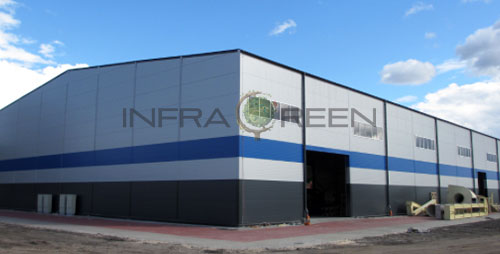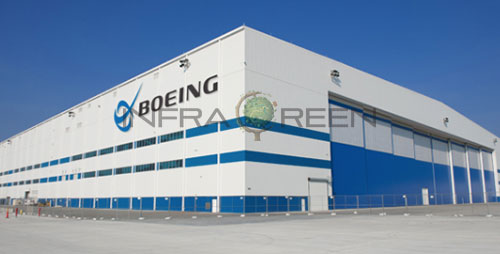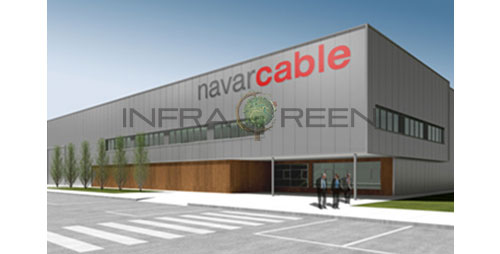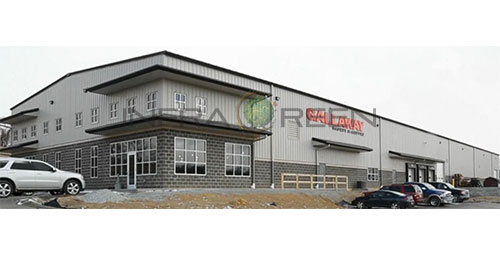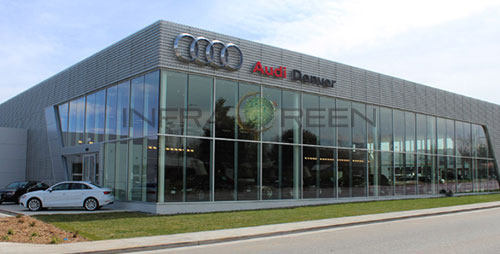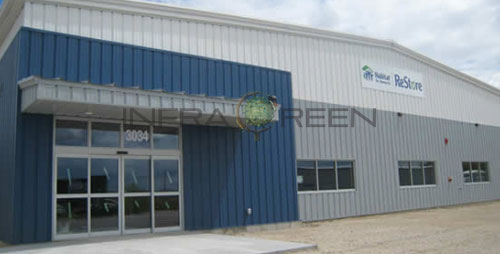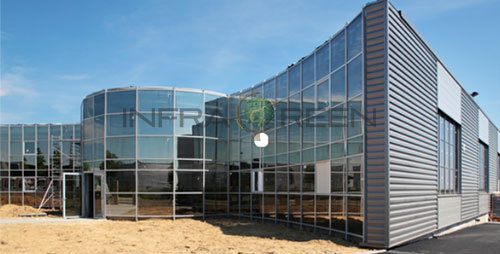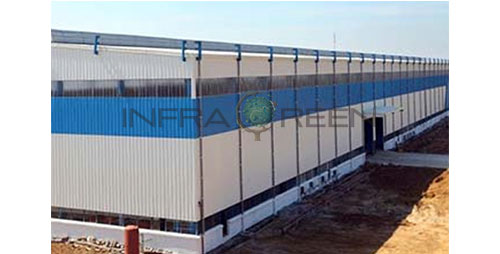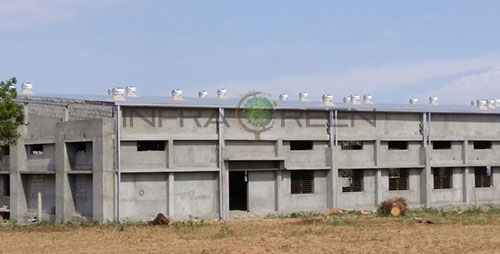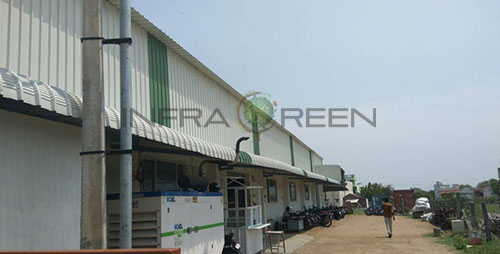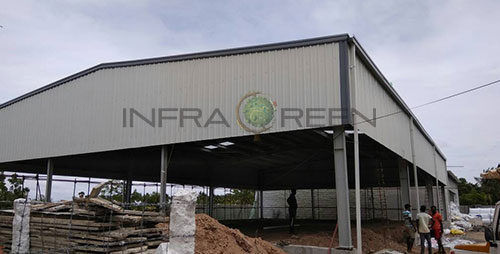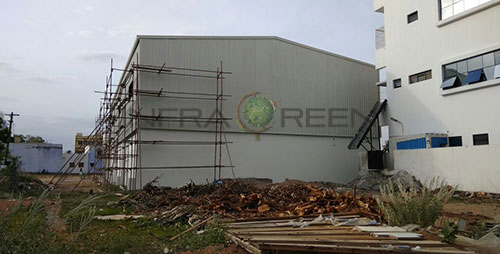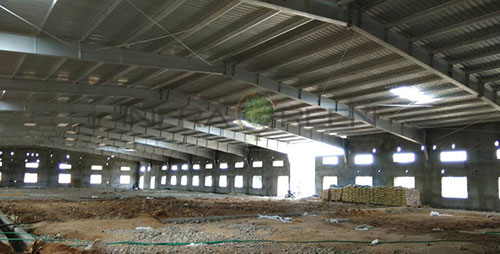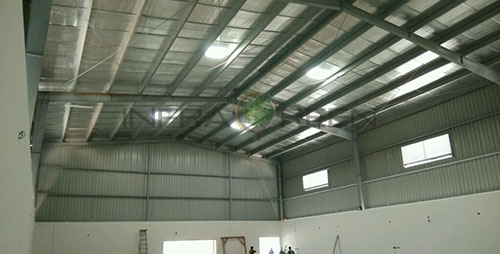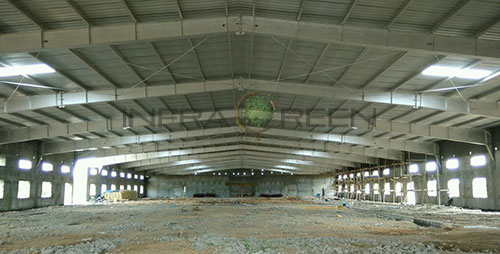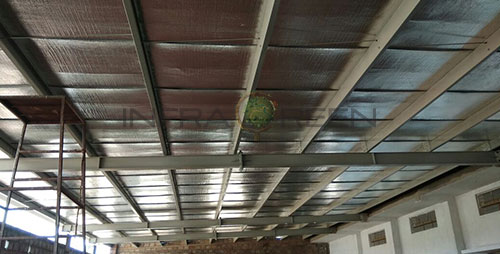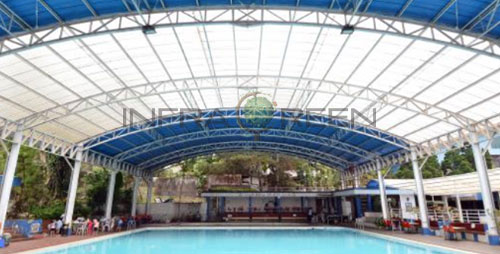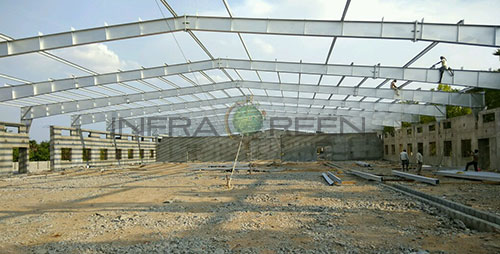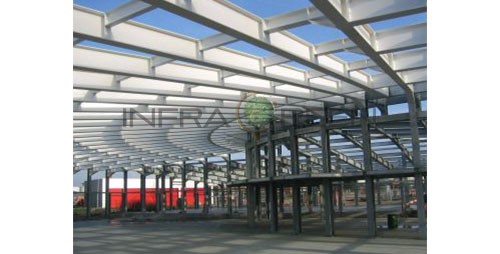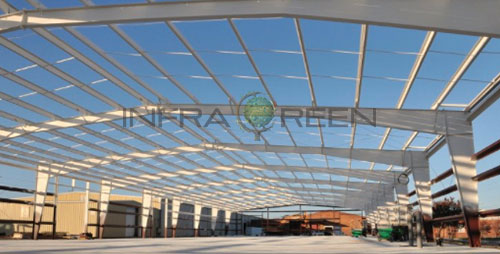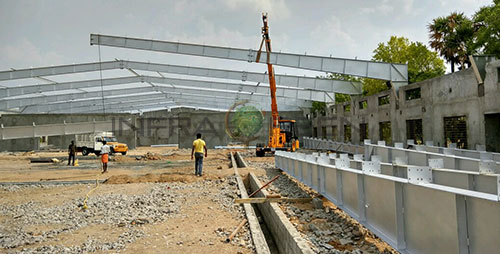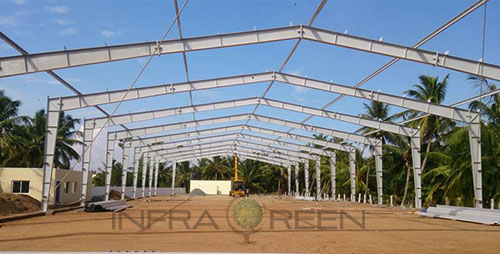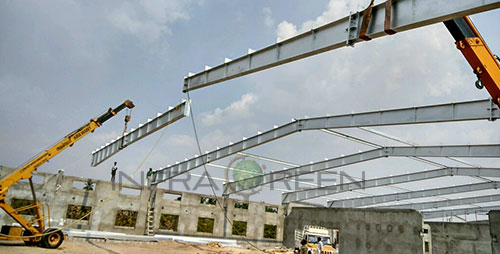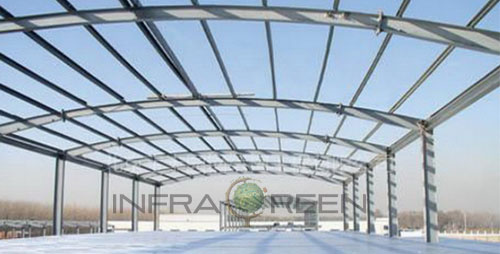About the Product
Infra Green pre-engineered buildings are tailor-made solutions based on customer’s needs and are custom-designed to meet exact requirements. These buildings are flexible enough to suit different building dimensions; they are easily expandable, can withstand harsh climatic conditions and come with maintenance-free exteriors.

Pre-engineered buildings are suitable for both, industrial and commercial operations. Warehouses, factories, aircraft hangars, cold storages, workshops, stadiums, supermarkets or any high-rise building. Infra Green Pre-Engineered Metal Building Systems offer modern solutions to all building constructions along with the benefits of superior quality, efficiency, and durability.
Design and Engineering
Infra Green Metal Building includes:
1. Primary and Secondary Framing

2. Choice of Single Roof System
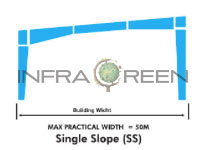
3. Choice of Two Roof Systems
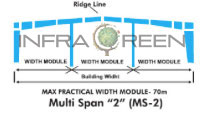
4. Choice of Three Wall System
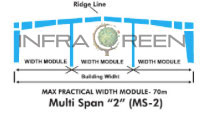
5. Choice of Arch Roof Systems

6. Choice of Lean to System
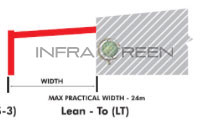
7. All Connections
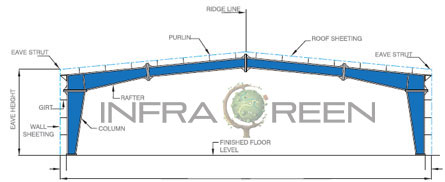
8. All Fixings
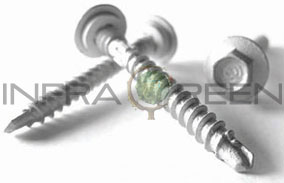
9. Flashings
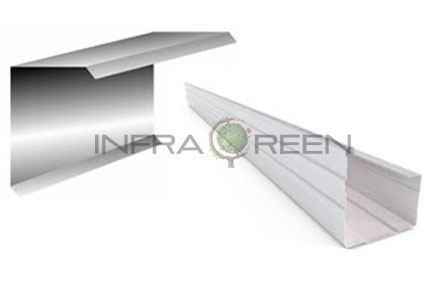
10. Integrated Accessories
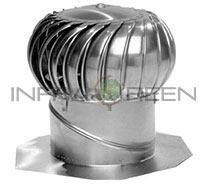
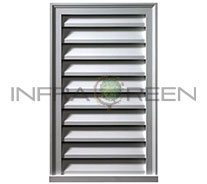
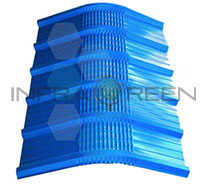
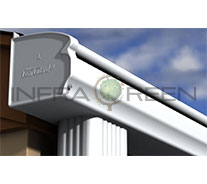
11. Multispan with Crane and Mezzanine
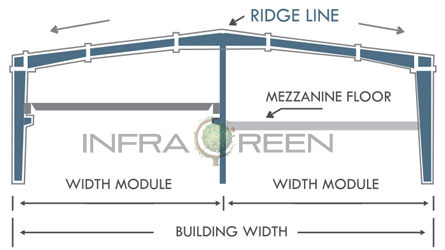
12. All Sealants for weather proofing
13. Thermal or acoustic insulation
14. Liner Panels
Building Nomenclature
Infra Green pre-engineered buildings are custom-designed to meet your exact requirements. The basic parameters that define a pre-engineered building are:
Building Width
Building width is defined as the distance between the outer side of an eave strut of one side wall to the outer side of an eave strut of the opposite side wall.
Building Length
This is defined as the distance between the outside flanges of endwall columns in the opposite endwalls, and is a combination of several bay lengths.
End Bay Length
End bay length is the distance from the outer side of the outer flange of endwall columns to centre line of the first interior frame column.
Interior Bay Length
The most common bay spacings are 6 mts, 7.5 mts and 9 mts. The bay lengths can go up to 15 mts.
Building Height
Building height is the eave height, which is usually the distance from the bottom of the mainframe column base plate to the top outer point of the eave strut. Eave height can go up to 30 mts. When columns are recessed or elevated from finished floor, eave height is the distance from finished floor to the top of the eave strut.
Roof Slope (X/10)
This is the angle of the roof with respect to the horizontal base. The most common roof slope is 1/10. However, any practical roof slope is possible.
Design Loads
Unless otherwise specified, Infra Green pre-engineered buildings are designed for the following minimum loads:
- Roof Live Load: 0.75 kN/m2
- Design Wind Speed: As per IS:875 for location.
Design for seismic loads, collateral loads or any other local conditions must be specified at the time of quotation.
Loads are applied in accordance with the latest American Codes and Standards applicable to pre-engineered buildings unless otherwise requested at the time of quotation.
Primary Framing Systems
Infra Green buildings are optimised to meet specific requirements of each client. Commonly used primary framing systems are shown below. All frames shown are symmetrical about the ridge line. Framing systems asymmetrical about the ridge line, multi-span systems with unequal width modules and frames outside the ranges shown are possible, but require special study.
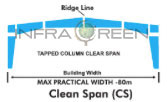
Intermediate Frames
Intermediate frames consist of built-up welded members. For multi-span frames, intermediate columns are either pipe sections, hot-rolled profiles or built-up welded profiles. Frames are complemented by flange bracing, connection bolts and anchor bolts. Column bases are usually pinned. Fixed connections, if required as per design, can also be provided.

Endwall Frames
Endwall frames consist of either built-up welded, hot-rolled or cold-rolled columns which support a cold-formed or hot-rolled rafter. Frames are complemented by connection bolts, anchor bolts and wind bracing, if required.

Wind Bracing
Wind bracing provides longitudinal stability for the building. It consists of cross-bracing located in the roof and side walls in one or more bays depending on the quantity of load and the length of the building. When required, cross-bracings can be replaced by wind portal frames or by fixed base wind columns located adjacent and connected to the mainframe columns.
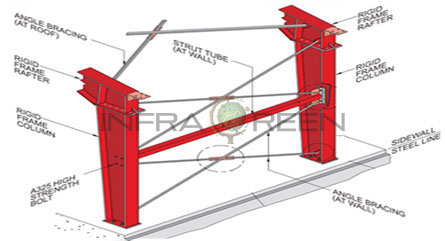
Crane Brackets
Crane brackets support the crane beams and are fixed to the column flanges
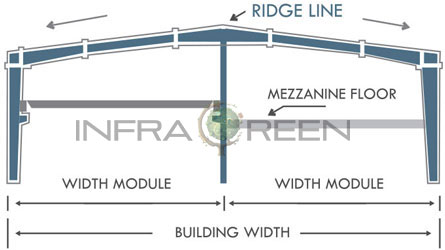
Secondary Framing Systems
Secondary framing consists of elements which support the roof and wall sheeting and transfer load to the primary framing.These include Roof Purlins, Wall Girts, Eave Struts, Clips etc.
Roof Purlins
Roof Purlins are cold or hot rolled, C or Z profiles normally 180 to 300 mm deep out of 1.6 to 3.15 mm thick steel. These are fixed to the top flanges of the rafters by means of clips bolted to the rafters, and the purlin web bolted to the clips. Purlin ends overlap to act as continuous beams.

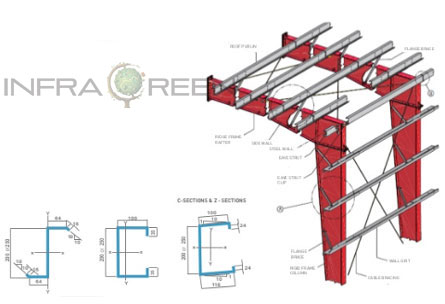
Wall Girts
Wall girts are cold or hot rolled C Sections normally 180 to 300 mm deep out of 1.6 to 3.15 mm thick steel. These are fixed to the outer flange of the side wall columns. There are two types of fixations:
- Fixed to the outer flange of the side wall columns by means of clips bolted to the column and girt web bolted to the clips. Overlap connections are provided for continuous beam action.
- Endwall girts and flush girts on side walls are normally flushed to the outer flange of the columns by means of clips which are bolted to the column web and girt web bolted to the clips.
Eave Struts
Eave struts are C profiles, normally 200 to 250 mm deep out of 2 to 3.15 mm thick steel. These are fixed to the outer flange of the side wall columns by means of clips bolted to the column and eave strut bottom flange bolted to the clip. Roof purlins also act as wind struts and enable transfer of strut load to the side wall columns through adequate bracing.
Cranes & Mezzanines
Cranes in Buildings
Infra Green pre-engineered buildings can be designed to accept most types of crane systems such as EOT, Monorail, Under-hung cranes and other load carrying devices like conveyors etc., in both clear-span and multi-span buildings. When a crane system is to be integrated, Infra Green’s scope is limited to brackets and crane runway beams which support the crane system. Complete information on the crane system is required in order to design and estimate buildings with cranes.
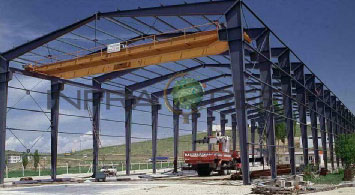
Mezzanines in Buildings
Intermediate mezzanine floors are possible in metal buildings. Mezzanine floors can be provided in complete or partial area in pre-engineered buildings to suit loading requirements for office and storage. Mezzanine floors consist of steel decks, supported by joists framed to the mezzanine beams. Main mezzanine beams normally run across the width of the building and are located under the main rafters while joists run parallel to the length of the building. The top flange of the joists fit immediately below the top flange of the mezzanine beam.
The economy of the mezzanine floor is affected by the applied load and support column spacings. Multi-level equipment platforms, catwalks, staircases etc. can be accommodated, if complete data is available.
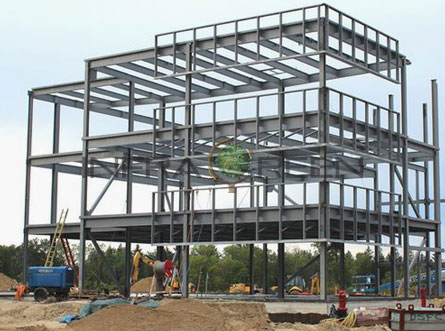
Accessories
Infra Green metal buildings have the flexibility to allow integration of all kinds of standard bought out accessories. Infra Green also supplies proprietary accessories.
Framed Openings
Framed openings are created in the wall framing, generally out of cold-formed sections to accommodate doors, windows, shutters, etc.
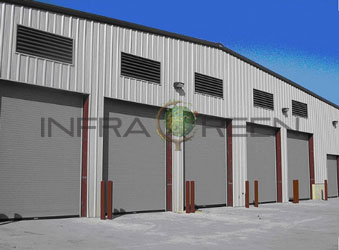
Fixed Louvers
S-Type louvers are available in depths of 100 to 200 mm for use on walls.
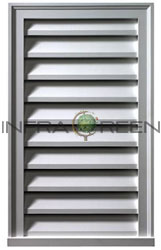
Sky Lights
GRP or Polycarbonate sky lighting panels compatible with the roof and wall panels are available. Flat panel strip lighting is also available.
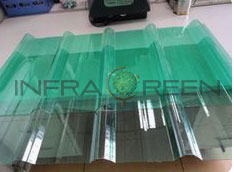
Ridge Ventilators
Infra Green supplies a range of ventilators in throat sizes from 200 mm to 600 mm, complete with fixing accessories. Ventilators with movable dampers can also be supplied.
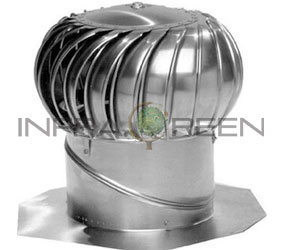
Roof Monitors
Roof monitors can be provided in buildings for natural ventilation and ridge lighting.
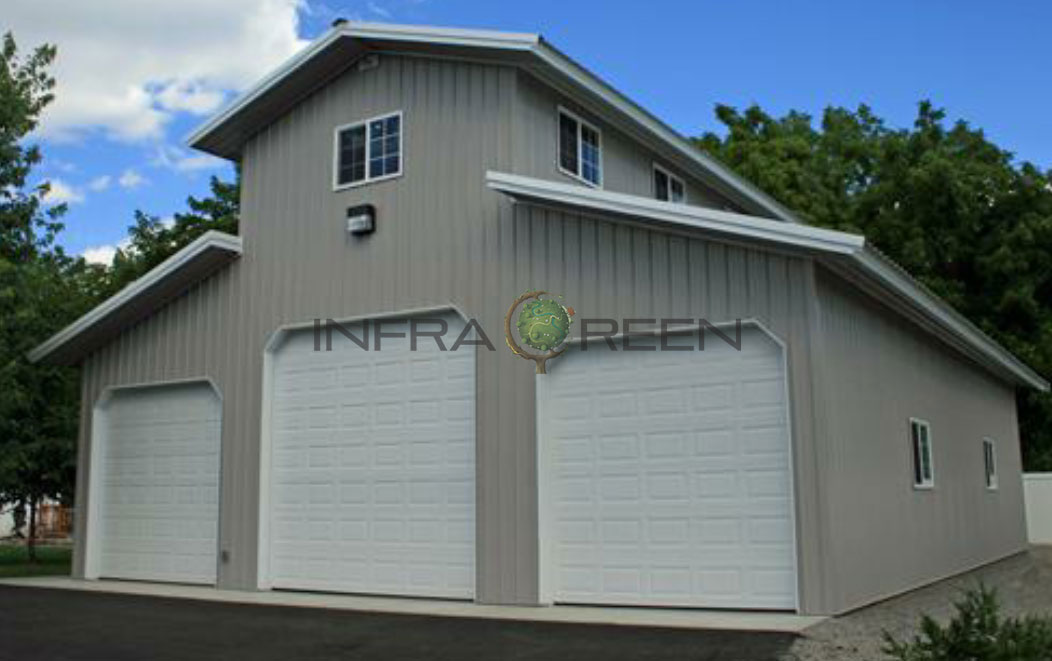
Roof Curb
Roof curbs are supplied for equipment mounting on roofs or for special roof penetration requirements.
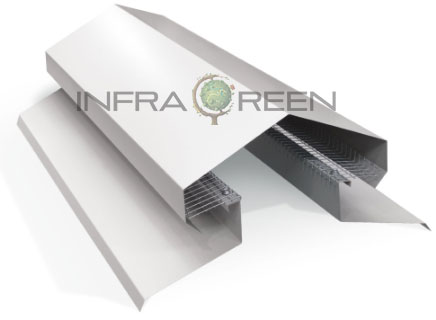
Applications
- Industrial Buildings
- Residential Buildings
- Multi-storey Buildings
- Car Parkings
- Warehouses
- Stadiums
- Workshops
- Aircraft Hangars
- Showrooms
- Bridges
- Supermarkets
Advantages
Infra Green pre-engineered buildings are tailor-made solutions as per customer’s needs and are custom-designed to meet exact requirements.
- Prime Quality, Long Life and Economic
- Heat Minimization is possible by insulation
- Faster Construction
- Architectural Flexibility
- Erecting, Dismantling Time and cost is very minimum
- Remove and Re-Erect easily
- Minimum Maintenance
- Easy integration of all traditional construction materials such as brickwork, glazing, timber, etc.
- Optimization in accordance with customer’s requirements.
- Addition of canopies as a direct continuation of the roofline or at a lower level with positive or negative roof slopes.
- Addition of parapets, partially or completely around the building.
- Weather-tight roof and wall coverings with accessories for maintenance-free exteriors.
- Optimized design of steel thereby reducing weight, while meeting all design requirements
- Quality design, manufacturing and erection.
Engineering Strength
Infra Green’s engineering strengths help convert complex and expensive conventional steel buildings into simpler and economical pre-designed, pre-engineered buildings without sacrificing utility and function. Infragreen has, with the use of specialized software packages and custom developed analysis, computerized the entire engineering process.
Design calculations are comprehensive and the explanations are furnished to enable the consultants in understanding the design of an Infrageen Pre-engineered Building.


